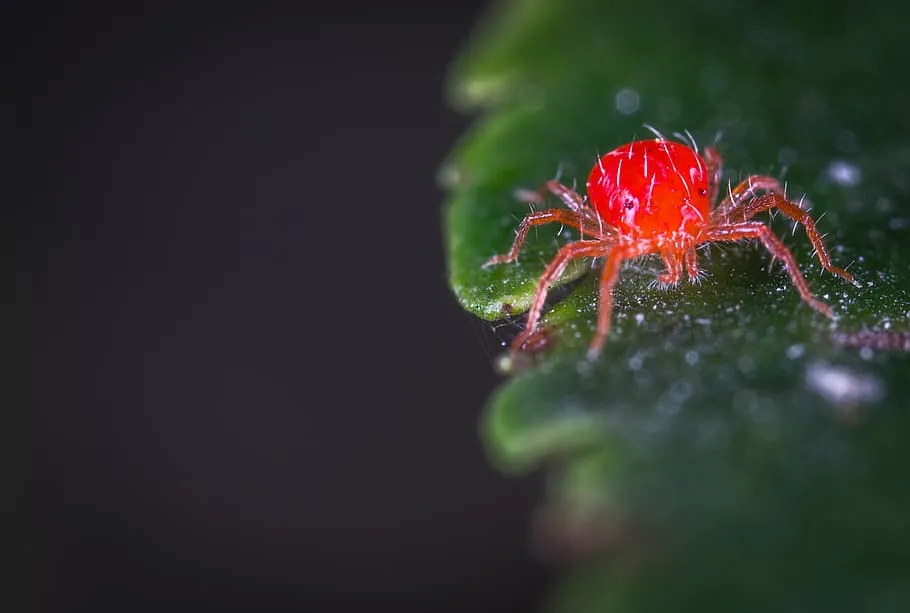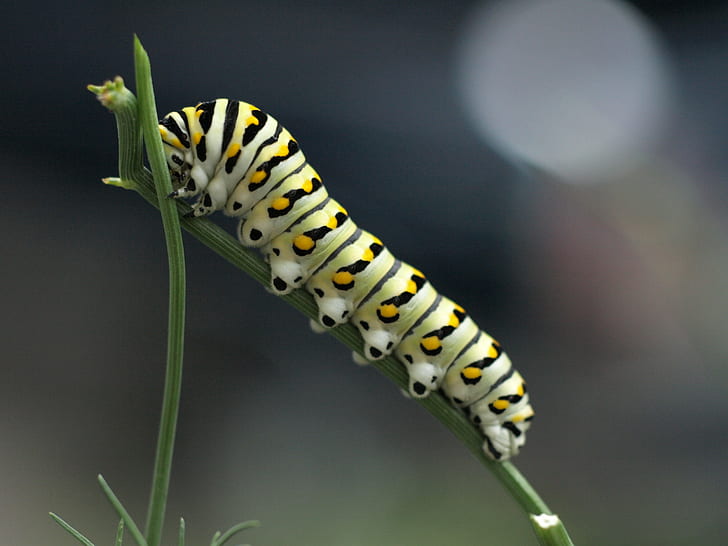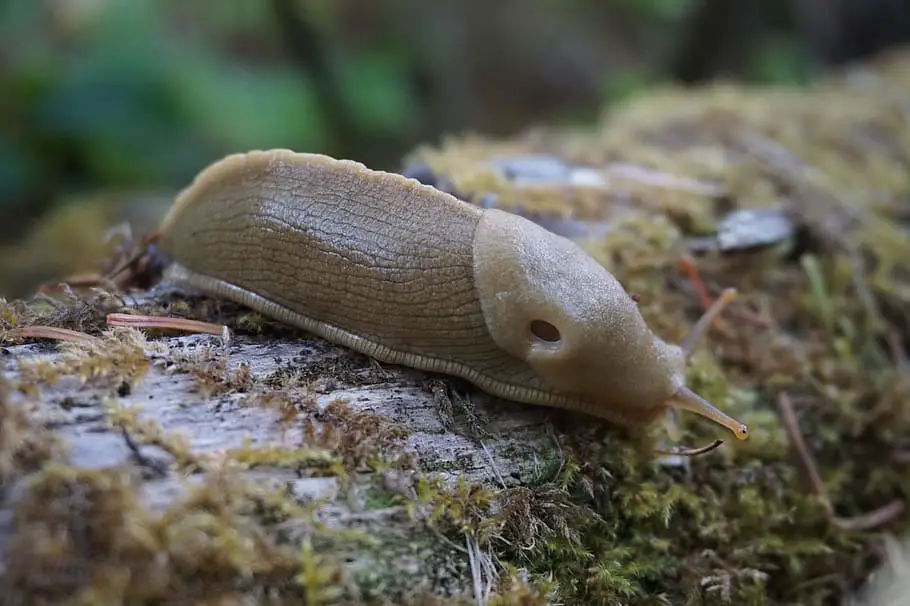This post may contain affiliate links. If you buy something from one of our links we may earn a commission. Thanks

Howdy, fellow urban gardeners! Today we’re going to talk about a topic that’s near and dear to my heart – rooftop garden pest control strategies.
Now, if you’re like me and you’ve got a green thumb that just won’t quit, even in the middle of the city, you know that growing a rooftop garden can be a real joy.
But let me tell you, those pesky critters can sure put a damper on things if you’re not careful!
Common Pests in Rooftop Gardens
Get ready to tackle a problem that plagues many of us rooftop farmers – pests in our sky-high gardens.
Now, I know what you might be thinking: “I’m way up high in the city sky! How can pests even find my little slice of heaven?”
Well, let me tell you, those critters are crafty and they’ll sniff out your garden faster than a bloodhound on a scent trail.
First off, let’s talk about the creepy crawlies – insects like aphids, caterpillars, and spider mites.
These little buggers can infest your rooftop garden quicker than a tumbleweed in a windstorm, causing all sorts of damage to your precious plants.
Aphids, for example, are like tiny vampires, sucking the life out of your plants’ leaves and stems.
And don’t even get me started on caterpillars – they’ll munch through your leafy greens faster than a cowboy can say “Yeehaw!”
But it’s not just the insects you gotta watch out for, folks. Birds and rodents can also be a real pain in the petunias.
Now, don’t get me wrong, I love our feathered friends as much as the next guy, but when they start treating your garden like an all-you-can-eat buffet, it’s time to take action.
Birds will peck at your fruits and seeds, while rodents like squirrels, rats, and mice will gnaw on your plants and dig up your soil like they’re searching for buried treasure.
Integrated Pest Management
So, what’s a rooftop gardener to do? Well, no worries my green-thumbed compadres!
There’s a little something called Integrated Pest Management, or IPM for short. It’s like having a whole posse of pest-fighting strategies working together to keep your garden safe and sound.
IPM combines all sorts of techniques, from biological controls like introducing natural predators, to cultural practices like proper sanitation and maintaining a balanced ecosystem.
IPM is an approach to pest management that combines common-sense practices, such as setting action thresholds, monitoring and identifying pests, and using preventive and least-risk methods. More at EPA
One thing I always recommend is creating a diverse garden habitat. By adding things like birdhouses and bat boxes, you can attract beneficial critters that’ll help keep the pest population in check.
Plus, it’ll make your rooftop garden feel like a real slice of nature in the middle of the city!
So there you have it, folks – a quick rundown of the common pests you might encounter in your rooftop garden, and some tips on how to keep ’em at bay.
Remember, a little bit of prevention and some good old-fashioned IPM can go a long way in protecting your plants and keeping your garden looking as pretty as a picture. Stay vigilant, my friends, and happy gardening!
So now lets talk about some of the most common critters that can wreak havoc on your rooftop garden. Now, I know these pests might seem small, but trust me, they can cause some mighty big problems if you’re not careful!
Aphids: The Tiny Terrors

Aphids may be small, but don’t let their size fool you. These little bugs can wreak havoc on your plants faster than you can say “garden disaster!”
The Problems:
- Rapid reproduction: Aphids multiply faster than rabbits on a hot date.
- Nutrient depletion: They suck the life out of your plants like tiny vampires.
- Disease spread: Aphids are the gossip columnists of the garden, spreading nasty viruses like potato and cucumber mosaic.
Solutions:
- Companion planting: Enlist the help of marigolds or nasturtiums as your garden bouncers to keep aphids at bay.
- Physical barriers: Use row covers to create an exclusive “no aphids allowed” club for your plants.
Remember, with a little creativity and some strategic planning, you can tell those aphids to bug off and keep your garden looking fabulous!
Spider Mites: The Tiny Arachnids of Doom

Don’t be fooled by their miniature size – spider mites are the ninjas of the garden, silently wreaking havoc on your plants!
The Problems:
- Leaf destruction: Spider mites munch on your plants’ leaves faster than a cowboy can lasso a steer.
- Discoloration: They suck out the chlorophyll, leaving behind a mottled, discolored mess.
- Sneaky nature: These pests are so small, you might not notice them until it’s too late.
Solutions:
Water blasting: Give your plants a refreshing shower and wash those mites right off their leaves!
- Natural predators: Introduce ladybugs or lacewings to your garden – they’ll devour those spider mites like they’re at an all-you-can-eat buffet.
With a little vigilance and some creative pest control, you can send those spider mites packing and keep your plants looking their best!
Caterpillars: The Hungry Teenagers of the Insect World

Don’t be fooled by their future transformation into beautiful butterflies – caterpillars can wreak havoc on your garden before they ever sprout wings!
The Problem:
Voracious appetites: Caterpillars will devour just about any green, leafy plant in sight, stripping foliage faster than a herd of hungry cattle.
Solutions:
- Natural predators: Enlist the help of birds or parasitic wasps to keep the caterpillar population in check.
- Companion planting: Plant strongly scented herbs like basil, mint, or marigolds to deter caterpillars from your prized plants.
With a little bit of strategy and some help from Mother Nature, you can send those hungry caterpillars packing and keep your garden looking lush and beautiful!
Snails and Slugs: The Slimy Bandits of the Night

Don’t let their slow pace fool you – snails and slugs can leave a trail of destruction in your garden while you’re fast asleep!
The Problem:
Midnight raids: Snails and slugs love to feast on your tender seedlings and leaves under the cover of darkness, leaving behind a slime trail as evidence of their crimes.
Solutions:
- Create a barrier: Spread diatomaceous earth or crushed eggshells around your plants to deter these slimy pests from crossing over to your prized veggies.
- Beer traps: Set up a shallow dish filled with cheap beer and let the slugs and snails belly up to the bar. They’ll be too busy enjoying their brew to notice when they fall in and can’t escape!

With a few clever tricks up your sleeve, you can outsmart these slimy bandits and keep your garden safe from their midnight munchies!
Squirrels and Birds: The Acrobats and Dive-Bombers of the Garden

While they may be cute, squirrels and birds can treat your garden like an all-you-can-eat buffet, causing some major headaches for gardeners!
The Problems:
- Acrobatic squirrels: These furry friends can scale fences and jump from trees to dig up your carefully planted bulbs and nibble on tender shoots.
- Dive-bombing birds: Birds will swoop in and snatch up newly planted seeds before they can sprout, and strip fruit plants clean in the blink of an eye.
Solutions:
- Physical barriers for squirrels: Use wire mesh or chicken wire around your plants to create a tiny fort that keeps these varmints at bay.
- Visual deterrents for birds: Employ reflective tape, fake owls, or even a DIY scarecrow (don’t forget the stylish cowboy hat!) to scare birds away from your precious plants.
With a little ingenuity and some creative pest control solutions, you can outsmart these acrobatic and dive-bombing garden bandits and keep your plants safe and sound!
Final Thoughts On Garden Pests
And there you have it, folks – a rundown of some of the most common pests you might encounter in your rooftop garden.
Remember, a little bit of prevention and some creative problem-solving can go a long way in keeping your garden healthy and thriving.
So get out there and show those pests who’s boss – and if all else fails, just remember to keep a good sense of humor and a can-do attitude! Keep on gardening, my friends!
Preventative Measures for Pest Control
Listen up, rooftop gardeners! If you want to keep those pesky critters from munchin’ on your precious plants, you gotta be proactive.
Implementing some good ol’ preventative measures is the key to keeping your garden looking as pretty as a picture.
Choose pest-resistant plants:
Marigolds, lavender, and mint are like the bouncers of the plant world, keeping unwanted bugs at bay.
Use physical barriers:
Install mesh screens or row covers to stop pests dead in their tracks.
Prevent them from getting to your plants and causing damage.
Stay vigilant:
Regularly inspect your plants for signs of pest activity, like chewed-up leaves or weird webbing.
Catch those critters early on for easier removal and to keep your garden in tip-top shape.
By choosing resistant plants, using physical barriers, and staying vigilant, you can keep your rooftop garden pest-free and thriving.
Now, if you’ll excuse me, I’ve got some gardening to do!
Use Physical Barriers
If you really want to give those pesky critters the boot, physical barriers are the way to go! Installing fencing, netting, or mesh around your rooftop garden can work wonders in keeping unwanted visitors at bay.
Netting:
Great for keeping birds from swooping in and snacking on your fruits and veggies.
Like putting up a big “No Trespassing” sign for feathered friends, without harming them.
Fences:
Perfect for larger pests like deer or raccoons. Create a sturdy boundary that critters just can’t seem to get past, no matter how hard they try!
Mesh:
Like a superhero suit for your garden, protecting it from even the tiniest insects and rodents.
Choose the right barrier for the specific pests you’re dealing with in your area. Install it securely, without leaving any gaps or weak spots for sneaky pests to slip through.
A little bit of physical barrier goes a long way in keeping your rooftop garden safe and sound!
Keep the Garden Clean
If you want to keep those pesky pests from setting up shop in your rooftop garden, you’ve got to keep things clean and tidy.
A little bit of elbow grease goes a long way in preventing pest problems down the line.
Stay on top of your weeding game:
- Regularly pull out unwanted plants to keep your garden looking sharp.
- Eliminate potential hiding spots for pests.
Get rid of debris:
- Remove fallen leaves, twigs, and other debris.
- Make your garden look prettier and take away cozy places for pests to hide.
Don’t forget overall landscape maintenance:
- Prune overgrown plants.
- Ensure proper drainage.
- Keep an eye out for signs of pest activity or plant diseases.
- Create an environment that pests won’t want to call home.
Roll up your sleeves, grab your gardening gloves, and get to work! A clean garden is a happy garden, and a happy garden is a pest-free garden. Now, if you’ll excuse me, I’ve got some weeding to do.
Organic Pest Control Methods
Listen up, y’all! If you’re looking to keep your rooftop garden free from pests without resorting to harsh chemicals, organic pest control methods are the way to go.
They’re better for the environment and safer for you and your plants. Let’s dive into some of my favorite techniques!
Companion Planting:
Strategically plant certain species together that naturally repel pests. It’s like giving your garden its own personal bodyguards!
Examples: Marigolds next to tomatoes (repels nematodes), basil and peppers (repels aphids and hornworms).
Neem Oil:
It’s like kryptonite for bugs! Made from neem tree seeds, it acts as a natural insecticide that disrupts pest growth and reproduction.
Mix with water and dish soap, then spray on plants for serious pest protection.
Homemade Insecticidal Soap:
Whip up your own potent pest-fighting potion with liquid soap and water.
Suffocates soft-bodied insects like aphids and spider mites on contact, without harming beneficial bugs.
Diatomaceous Earth:
- A powdery substance made from fossilized remains of tiny aquatic organisms called diatoms.
- Absorbs protective oils from an insect’s exoskeleton, causing dehydration and death.
- Sprinkle around your plants and watch those pests meet their demise!
Give these organic pest control methods a try, and watch your rooftop garden thrive without any nasty chemicals!
Companion Planting
Alright, folks, let’s talk about one of my favorite organic pest control methods – companion planting!
This is where you get strategic with your plant placement, using the power of nature to keep those pesky critters at bay.
Think of it like throwing a dinner party: Invite guests (plants) that get along and bring out the best in each other.
Create a natural defense system against pests while attracting beneficial insects.
Marigolds and Tomatoes:
Marigolds are a tomato’s best friend! Plant them alongside your tomato crop to keep harmful nematodes away. They add a pop of color to your garden too.
Basil and Peppers:
The dynamic duo that tastes great together in a dish and works wonders in the garden.
Basil helps repel aphids and tomato hornworms. Peppers act as a natural insecticide. It’s like having your own little pest-fighting team!
The beauty of companion planting is that it lets nature do the heavy lifting for you.
By fostering a diverse and thriving ecosystem on your rooftop, you can say goodbye to harsh chemical pesticides and hello to a healthier, happier garden.
Get creative with your plant pairings – your garden (and your taste buds) will thank you!
Neem Oil
HARRIS Neem Oil Cold Pressed Water Soluble Concentrate, Makes 12 Gallons
If you’re looking for a natural way to keep pests in check and prevent plant diseases from spreading in your rooftop garden, neem oil is your new best friend.
This stuff is like liquid gold for gardeners!
Neem oil comes from the neem tree and has impressive pest-fighting properties:
Effectively controls common garden pests like aphids, spider mites, whiteflies, and caterpillars. Safe for beneficial insects like bees and ladybugs.
How to use neem oil:
- Dilute the oil according to the manufacturer’s instructions to avoid harming your plants.
- Mix neem oil with water and a dash of dish soap to help it stick to the leaves.
- Coat both the tops and bottoms of the leaves, where pests love to hide out.
- Reapply every 7-14 days, especially during the peak of the growing season.
What makes neem oil so effective:
- It doesn’t just kill pests on contact – it disrupts their whole life cycle by messing with their feeding and reproductive patterns.
- Acts as a repellent, making your plants less appealing to unwanted critters.
- Has fantastic antifungal properties, helping protect your plants from diseases and keeping them healthy and vibrant.
If you’re ready to give those pests the boot and keep your rooftop garden thriving, grab yourself some neem oil and get spraying! Your plants (and your peace of mind) will thank you.
Homemade Insecticidal Soap
If you’re looking for a safe and natural way to kick those pesky insect pests to the curb without harming your beneficial bugs or your prized plants, homemade insecticidal soap is the way to go.
What you need:
- Plain ol’ liquid soap (non-antibacterial)
- Water
- Mix them together, and voila! You’ve got a potent pest-fighting potion.
How it works:
- The soap breaks down the protective coating on soft-bodied pests, leaving them vulnerable and leading to their demise.
- It’s like giving them a bubble bath they’ll never forget!
How to apply:
- Spray directly on the pests themselves – it works on contact, so it needs to hit ’em where it counts.
- Don’t go overboard – a little goes a long way, and you don’t want to drown your plants in the process.
Why it’s great:
It’s selective – targets the bad bugs while leaving the good ones (like ladybugs and bees) unharmed.
Can help prevent plant diseases from taking hold, keeping your garden looking lush and healthy all season long.
Give homemade insecticidal soap a try – your rooftop garden (and your wallet) will thank you!
And if anyone gives you funny looks for spraying soap on your plants, just tell ’em Steve sent you.
Diatomaceous Earth
Garden Safe Insect Killer, Diatomaceous Earth
Howdy, garden warriors! Today, I want to talk to you about a secret weapon in the fight against pesky crawling critters – diatomaceous earth.
Now I know it might sound like something out of a sci-fi movie, but trust me, this stuff is as natural as it gets!
-
What is diatomaceous earth?
- A powdery substance made from the fossilized remains of tiny aquatic organisms called diatoms.
- Diatoms have skeletons made of silica, which gives diatomaceous earth its abrasive properties.
-
How it works against pests:
- When pests like ants, cockroaches, and earwigs come into contact with diatomaceous earth, the abrasive particles damage their exoskeletons.
- It’s like they’re walking through a field of tiny glass shards!
- Over time, this leads to dehydration and eventually, the pests kick the bucket.
-
Why it’s great for rooftop gardens:
- Completely non-toxic and safe for humans and pets.
- A mechanical method of pest control that doesn’t rely on harsh chemicals.
- Doesn’t harm beneficial insects or your precious plants.
-
How to use diatomaceous earth effectively:
- Focus on strategic placement – sprinkle it around entry points or along pest trails.
- Create a barrier that pests have to cross, exposing them to the abrasive particles.
- Keep in mind that diatomaceous earth works best when it’s dry. Reapply more often in humid or rainy conditions.
Diatomaceous earth is a fantastic tool to have in your organic gardening toolkit. It’s effective, natural, and safe for your rooftop ecosystem. Give it a try – show those pests who’s boss!
Biocontrol Strategies for Pest Control
If you want to keep your rooftop garden in tip-top shape without resorting to harsh chemicals, it’s time to enlist some help from Mother Nature herself.
That’s right, I’m talking about biocontrol strategies – the ultimate tag team of pest management!
What is biocontrol?
- Recruiting beneficial organisms to do the heavy lifting for us.
- Tiny heroes include ladybugs, praying mantises, and microscopic nematodes.
- They might not wear capes, but they’re the real MVPs of the garden world.
How these good guys help us out:
- Ladybugs chow down on aphids like they’re at an all-you-can-eat buffet.
- Praying mantises snatch up caterpillars and other pesky critters faster than you can say “salad bar.”
- Nematodes hunt down soil-dwelling pests like it’s their job (because it is).
The beauty of biocontrol:
- It’s all about balance – encouraging a healthy population of beneficial organisms to keep pest numbers in check.
- It’s like having a tiny security team working around the clock to protect your plants.
- Perfect fit for rooftop gardens and green spaces, aligning with the “sustainable and eco-friendly” vibe.
How to attract beneficial critters to your garden:
- Plant a variety of flowers and herbs to attract ladybugs and other good bugs.
- Provide cozy hiding spots like leaf litter or mulch for predatory insects to hunker down in.
- Buy and release beneficial organisms into your garden yourself.
Biocontrol strategies are like the secret weapon of rooftop gardening. By working with nature instead of against it, you can create a self-sustaining, pest-fighting ecosystem that’ll keep your plants happy and healthy.
And who knows? You might even make some new bug buddies along the way!
Ladybugs
1500 Live Ladybugs – Good Bugs for Garden – Guaranteed Live Delivery!
Alright, garden gurus, let’s talk about one of the most adorable and hardworking critters in the world of biocontrol – ladybugs!
These little red and black spotted beauties are like the superheroes of the garden, swooping in to save your plants from pesky aphids and mites.
-
Why ladybugs are amazing:
- They’re practically the mascots of the insect world with their cute appearance.
- These fierce predators have an insatiable appetite for aphids and other soft-bodied pests.
- A single ladybug can devour up to 5000 aphids in its lifetime – that’s like you eating 5000 hamburgers!
-
How ladybugs help your garden:
- They eat pests without harming your precious plants or leaving behind any nasty chemical residues.
- It’s like having a tiny, spotty exterminator on your side, working 24/7 to keep your garden pest-free.
-
Attracting ladybugs to your rooftop garden:
- Plant a smorgasbord of nectar-rich flowers like dill, dandelions, and fennel to provide food and energy for your ladybug friends.
- Provide cozy hibernation spots like stacked stones or hollow sticks for ladybugs to retreat to during chilly weather.
- This ensures a thriving ladybug population ready to go when spring rolls around.
Ladybugs are the unsung heroes of the rooftop garden world. By attracting these beautiful and voracious beetles to your green space, you’ll be harnessing the power of nature to keep pests in check and your plants happy and healthy.
Plus, you’ll get to enjoy the sight of these charming little critters fluttering about your garden – and that’s a win-win in my book!
Lacewings
Natures Good Guys – Green Lacewing Eggs on Hanging Card (2,500 Eggs)
If you’re looking for a tiny, green hero to help you battle those pesky aphids and other soft-bodied pests, look no further than the mighty lacewing!
These delicate-looking insects are like the superheroes of the garden world, with their larvae (known as “aphid lions”) devouring hundreds of pests in a single day.
Talk about an insatiable appetite! Lacewings are attracted to plants like dill, angelica, and coriander, so consider adding these to your rooftop garden to create a lacewing-friendly environment.
And if you want to give these beneficial bugs a head start, you can even purchase lacewing eggs from garden supply stores and let them hatch right in your garden.
With lacewings on your side, you’ll have a natural, eco-friendly way to keep those pests in check and your rooftop oasis thriving!
Praying Mantis
Praying Mantis (5) Egg Cases with Habitat Cup- 5 Egg Cases
& 1,500 Live Ladybugs
Alright, folks, let’s talk about another one of my favorite garden predators – the praying mantis!
These fascinating critters are like the ninjas of the insect world, and they’re an absolute godsend when it comes to keeping your rooftop garden free from pesky pests.
Why praying mantises are cool:
- With their long, slender bodies and powerful, grasping front legs, they look like they’re ready to bust out some serious kung fu moves.
- They’re voracious predators with an appetite for just about any creepy-crawly that crosses their path.
- It’s like having your very own Karate Kid patrolling your plants, keeping them safe from harm.
How praying mantises hunt:
- They sit perfectly still, blending in with their surroundings, waiting for an unsuspecting pest to wander by.
- Faster than you can blink, they strike with lightning speed, snatching up their prey with those powerful front legs.
- It’s like watching a real-life action movie unfold in your garden!
Benefits of having praying mantises in your garden:
- You can significantly reduce your reliance on chemical pesticides.
- These natural born killers are a key component of any eco-friendly pest management strategy.
- They help maintain the delicate balance of your rooftop ecosystem.
Attracting praying mantises to your garden:
Create a diverse, inviting habitat with plenty of plants and hiding spots like tall grasses, shrubs, and dense foliage.
Consider releasing mantis egg cases (oothecae) in your garden, but choose a species appropriate for your area.
Once you’ve got a few praying mantises patrolling your rooftop garden, you’ll wonder how you ever got along without them.
These fascinating, skilled predators are like having your own personal army of pest-fighting ninjas, ready to defend your plants at a moment’s notice.
So sit back, relax, and let the praying mantises do what they do best – keeping your garden healthy, happy, and pest-free!
Nematodes
Natures Good Guys – Triple Blend Beneficial Nematodes HB+SC+SF (50 Million)
Today, we’re diving into the microscopic world of nematodes – the tiny, unseen heroes of rooftop pest control. These little worms are about to become your new best friends in the fight against soil-dwelling pests!
What are nematodes?
- Microscopic organisms that live in the soil
- They’ve got a serious vendetta against pests like grubs, caterpillars, and beetles
- Completely harmless to humans, pets, and beneficial insects
- Like having a tiny, targeted strike force working undercover to protect your plants
How nematodes work:
- Introduce them to your rooftop garden through a basic watering method
- They immediately start seeking out those pesky soil-dwelling critters
- They penetrate the pest’s body, releasing bacteria that ultimately lead to the pest’s demise
- It’s like a microscopic version of “Honey, I Shrunk the Pest Control!”
Benefits of using nematodes:
- Precise in their mission, only targeting harmful pests
- No collateral damage to beneficial organisms in your garden
- Reduces reliance on harsh chemicals
- Contributes to a more sustainable and eco-friendly approach to gardening
Appreciating these unsung heroes:
- Nematodes might not be glamorous or visible, but they’re the unsung heroes working tirelessly behind the scenes
- They’re small but pack a mighty punch in the world of eco-friendly pest management
- Give a nod of appreciation to these microscopic warriors while watering your rooftop garden
Nematodes might be tiny, but they’re the Special Ops of the garden world.
By introducing these microscopic mercenaries to your rooftop oasis, you can say goodbye to soil-dwelling pests and hello to a more balanced, thriving ecosystem.
So, let’s give a big ol’ thumbs up to these little worms and their tireless work in keeping our plants healthy and vibrant!
Chemical Pest Control Options
Alright, folks, let’s have a heart-to-heart about chemical pest control options. I know, I know – the mere mention of chemicals might make some of you cringe, especially when we’re talking about your precious rooftop gardens.
But hear me out, because sometimes, despite our best efforts with organic and biocontrol methods, we find ourselves face-to-face with a pest infestation that just won’t quit.
Insecticidal Soaps
- Derived from fatty acids
- Disrupt the cell membranes of pests, sending them to bug heaven
- Generally safe for plants, no need to worry about collateral damage
Botanical Insecticides
- The “good cops” of the chemical world
- Derived from natural plant sources, often have a more targeted approach
- Zero in on specific pests while leaving beneficial insects unharmed
- Like having a sharpshooter on your side, taking out the bad guys with precision
Synthetic Insecticides
- The heavy hitters, the “big guns” of pest control
Incredibly effective but should be used as a last resort - Can have a broader impact on the environment and may harm non-target organisms
- Like using a sledgehammer to crack a nut – it’ll get the job done, but it might leave a bigger mess
The key is to use chemical treatments responsibly. Read labels carefully, follow instructions, and only break out the big guns when absolutely necessary.
By using these options judiciously, we can preserve the delicate balance of our rooftop ecosystems while still giving those pests a run for their money.
Remember, chemical pest control options should always be used as a complement to organic and biocontrol methods, not as a replacement.
With a little know-how and a lot of care, we can keep our rooftop gardens thriving, no matter what those pesky critters throw our way!
Insecticidal Soaps and Oils
Alright, garden gurus, let’s dive into the world of insecticidal soaps and oils – the dynamic duo of rooftop pest control!
How they work:
- Coat pests, disrupting their cell membranes
- Essentially causing them to gasp their last breath
- Like giving them a bubble bath they’ll never forget
Eco-friendly benefits:
- Low toxicity level, safer alternative to harsh chemical pesticides
- Help prevent the development of pesticide resistance in pest populations
Usage tips:
- Always follow the manufacturer’s instructions to the letter
- Ensures most effective results while minimizing potential negative impacts on the environment
Insecticidal soaps and oils are the Batman and Robin of the rooftop garden world, ready to swoop in and save the day without leaving a trail of toxic destruction in their wake.
Botanical Insecticides
If you’re looking for a natural and targeted way to give those pesky rooftop garden pests the boot, it’s time to turn to our trusty friends: botanical insecticides.
What are botanical insecticides?
- Derived straight from Mother Nature’s pantry (neem, pyrethrum, garlic, etc.)
- Each plant has its own unique set of pest-fighting properties
- Safe for beneficial insects, like having a team of tiny, plant-powered bodyguards
Benefits of using botanical insecticides:
- Effective at keeping pests in check
- Reduce reliance on synthetic chemicals
- Promote biodiversity and embrace sustainable practices
Choosing the right one:
- Depends on the specific pests you’re dealing with
- Do your research and choose the right plant-powered potion for your particular pest problem
By harnessing the power of plants, you can give those pests the heave-ho while keeping your rooftop ecosystem happy, healthy, and thriving.
Synthetic Insecticides
Alright, garden warriors, it’s time to talk about the big guns of pest control: synthetic insecticides.
Pros:
- Potent and fast-acting
- Can save the day during severe pest outbreaks
Cons:
- Don’t discriminate, may harm beneficial insects and soil microbes
- Overuse can lead to environmental issues and pest resistance
Usage tips:
- Use sparingly and as a last resort
- Always read and follow label instructions carefully
- Use responsibly to minimize negative impacts on your rooftop ecosystem
Synthetic insecticides may be powerful, but they’re not always the answer. Use them wisely, sparingly, and with care.
Remember, a healthy, thriving rooftop garden is a happy rooftop garden, and that’s what we’re all striving for!
Rooftop Garden Pest Control Strategies FAQs
Alright, folks! I bet you’ve got some questions bouncing around in your head about tackling pests in your rooftop garden.
In this FAQ section, we’ll dive into some of the most common head-scratchers and provide you with the answers you need to keep your green oasis in tip-top shape. So let’s get down to business!
Q. What are some common pests that can infest a rooftop garden?
A. Some of the most common culprits include:
- Aphids
- Spider Mites
- Caterpillars
- Slugs
- Snails
- Birds
These pests can munch on your plants, spread diseases, and generally make a mess of things if left unchecked.
Q. How can I prevent pests from infesting my rooftop garden?
A. To keep pests from setting up shop in your garden:
- Use physical barriers like netting or fencing to block their access
- Regularly clean and maintain your garden to deter pests
- Try companion planting – some plants naturally repel certain pests, so strategically place them around your garden
Q. Are there any natural pest control methods for rooftop gardens?
A. Absolutely! Mother Nature has provided us with plenty of eco-friendly ways to deal with pests:
- Introduce beneficial insects like ladybugs or praying mantises to munch on pesky aphids and other pests
- Use organic pesticides and homemade solutions like garlic spray or neem oil without harming the environment
Q. What should I do if I notice pest infestation in my rooftop garden?
A. If you spot some unwanted visitors in your garden:
- Don’t panic! But act quickly
- Handpick any visible pests and dispose of them safely
- Use organic pesticides to target specific pests
- If the infestation is severe or overwhelming, seek professional help from a garden expert
Q. How can I ensure that my pest control methods are safe for the environment?
A. When it comes to protecting the environment:
- Opt for natural and organic solutions over harsh chemical pesticides
- Choose methods that use eco-friendly ingredients
- Only use what you need and avoid overusing any pest control products
Q. Can I still have a successful rooftop garden without using pesticides?
A. You better believe it! With the right preventative measures and natural pest control methods, you can have a thriving rooftop garden that’s pesticide-free:
- Focus on creating a diverse and healthy ecosystem in your garden to attract beneficial insects and keep pests in check naturally
- It might take a little extra effort, but the reward of a beautiful, sustainable garden is well worth it!
Learn more about rooftop gardening: Rooftop Gardening Ideas: 7 Tips and Tricks For Beginners
Visit my Amazon Influencer Page for videos and gardening products Grow Your Own Garden













